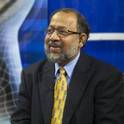Objective: To survey AOAN member countries regarding their organizational structure, postgraduate neurology training program, and resources for neurological care provision.
Methodology: A cross-sectional survey using a 36-item questionnaire was conducted among country representatives to AOAN from August 2015 to August 2016.
Results: A total of 18/20 AOAN member countries participated in the survey. All the countries have organized association with regular meetings, election of officers and neurology training program. In 9/18 countries, professionals other than neurologists were eligible for affiliation. In 11/18 countries, prior Internal medicine training (or equivalent postgraduate housemanship) is prerequisite to neurology program. Recertification examination is not a practice, but submission of CME is required in 7/18 countries to maintain membership. 12/18 countries publish peer-reviewed journals with at least 1 issue per year. Subspecialty training is offered in 14/18 countries. The ratio of neurologist to population ranges from 1:14,000 to as low as 1:32 million with 9/18 having <1 neurologist per 100,000 population. 6/18 countries have at least 1 specialized center solely for neurological diseases. In government-funded hospitals, the lag time to be seen by a neurologist and/or obtain neuroimaging scan ranges from 1day to 3months. All except one country have several medical- and lay- advocacy or support groups for different neurological conditions.
Implications: The data generated can be used for benchmarking to improve neurological care, training, collaborative work and research in the field of neurosciences among the AOAN member countries. The paper presented several strategies used by the different organizations to increase their number of neurologists and improve the quality of training. Sharing of best practices, academic networking, exchange programs and use of telemedicine have been suggested.
Available at: http://works.bepress.com/mohammad_wasay/127/

Issue is not provided by the author/publisher.